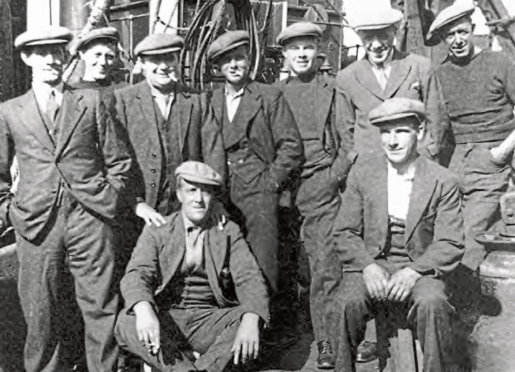It was one of the many tragedies which happened at sea during the Second World War.
But there was particular resonance for fishing communities across the north-east when the Ocean Victor was lost.
Though it was a non-military vessel it was torpedoed by the German U-boat Reichenberg in 1941 with the loss of 13 lives, 11 of them Scots and the other two from Denmark.
The victims plied their trade across the region’s busy coastal communities, including Aberdeen, Buckie, Cullen, Helmsdale and Rosehearty.
And the youngest of the casualties, Herbert Munro Hendry Burnett, was only 15 and at the beginning of his career when he was killed in the attack, which took place south of Iceland.
Even now, more than 75 years later, little is known about many of those who died in the fishing vessel skippered by Marquis Silverstone Slater.
But the North Bohemian Museum in Liberec in the Czech Republic has now made a direct approach to the Press and Journal requesting more information on those who died in the huge explosion, which destroyed the unescorted ship.
Ivan Rous, one of the heads of department at the amenity, said he was interested in uncovering the human stories behind those who never returned home.
He added: “We are working on the history of the trawler Ocean Victor, which was sunk on August 9, 1941 by a torpedo fired by U-206.
“The ship was made in Wivenhoe and was completed in June 1918 as the armed trawler HMS John Fairman of the Strath class for the Admiralty.
“In 1920, it was converted to a fishing trawler and renamed Ocean Victor for J Craig – a well-known company in Aberdeen.
“The most serious question of the whole tragedy is why U-boat captain Herbert Opitz issued an order to torpedo a fishing boat.
“We want to contact the relatives of the deceased sailors and discover more about their history.
“We know that many of the victims came from the Aberdeen area and they were mostly fishermen.
“Above all, we want to discover stories that relate to the tragedy and we would be delighted to hear from those people in Scotland who may be able to help us.”
Herbert Burnett was the son of Hugh and Isabella Burnett, who lived in the Woodside area of Aberdeen.
And Buckie fisherman, James Slater, was the husband of Matilda Slater, from Rosehearty.
Howard Drysdale, superintendent and port chaplain at Aberdeen Seafarers Centre, said yesterday it was important to commemorate the immense loss of life among non-serving personnel which had happened at sea throughout so many conflicts.
The losses were particularly heavy as the U-boats launched a series of offensives across the North Sea and other waters in which British fishing vessels operated.
Mr Drysdale added: “I understand the sadness of these unsung heroes who were not enlisted in the Royal Navy, yet, with the many hundreds of thousands of Merchant Seafarers, suffered the atrocities of war.
He made special mention of Mr Burnett, who was serving as apprentice deck hand when he died.
He said: “This young man gave his life for us today, for the freedom that we enjoy, and which he never had the opportunity to do so himself.
“It is right that we remember him and others like him.”
The fate of the crew has been recorded forever by Commemorative Plaque No 127 of the World War II memorial in the Tower of London.
Anyone who has information on the tragey and the crew of the Ocean Victor is asked to email ivan.rous@muzeumlb.cz
The victims:
- Alexander Addison, 25, deck trimmer, Buckie.
- James Bolton, 46, first engineman, Aberdeen.
- Herbert Burnett, 15, apprentice deck hand, Aberdeen.
- George Goodbrand, 43, cook, Cullen.
- Jakob Heynesen, age unknown, deck hand, Denmark
- Alexander Innes, 32, deck hand, Helmsdale.
- Alexander Stables Innes, 46, second engineman, Cullen.
- Daniel Joensen, age unknown, deck hand, Denmark.
- James Main, 40, deck hand, Aberdeen.
- Kenneth McKay, 45, deck trimmer, Helmsdale.
- Benjamin Nicolson, 44, second hand, Aberdeen.
- James Slater, 37, fisherman, Buckie.
- Marquis Silverstone Slater, skipper, 44, Aberdeen.

The same German U-boat that brought about the Ocean Victor tragedy were involved in a rescue operation of Allied servicemen just a few weeks later.
On August 26, a group of British airmen from the 612th RAF Squadron were spotted in the middle of the Atlantic at about 7.30 in the evening.
The pilots had made a forced landing into the sea from their Armstrong-Whitworth Whitley bomber and were in dinghies before being picked up by the U-206.
The captain, Herman Opitz, took them on board his vessel, even though such action was prohibited and transported them to the port of St Nazaire from where they were later sent to PoW camps.
The British airmen were eventually able to return to their homeland after the war had finished.










